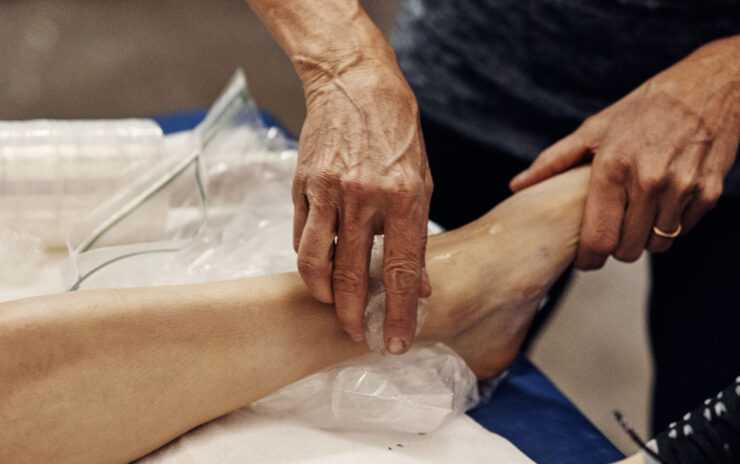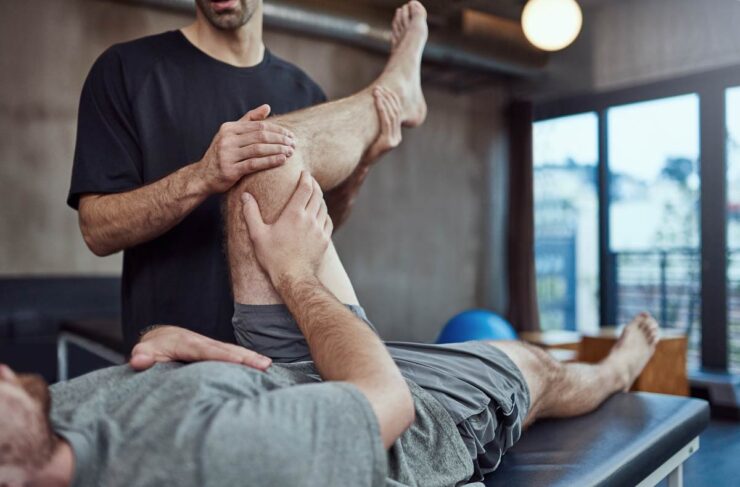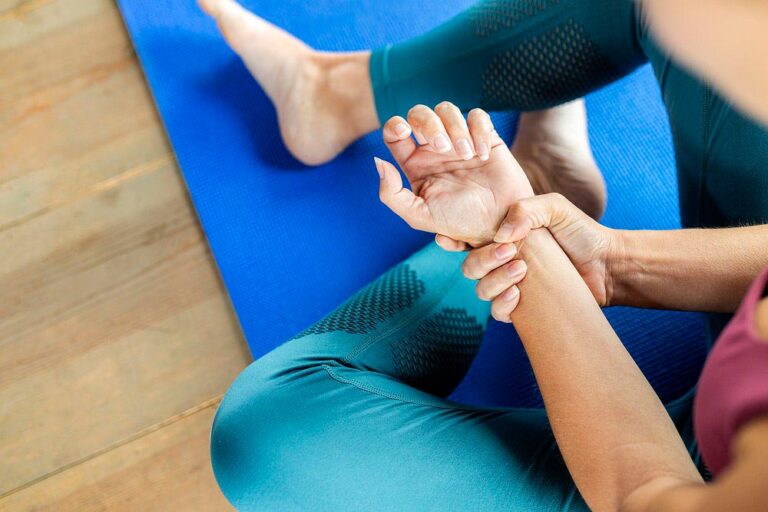As with any practice and workout, there is a potential for injuries when engaging in sports. While it’s a good way to get our daily exercise in and get some much-needed recreation, especially for those who are stuck inside of offices for long hours, sports can lead to injury. These injuries can be specific to the sport and triggered by inadequate preparation for the practice or accidents that may unfortunately occur. Whatever the source of injury may be, we are more than happy to cut down recovery time and get back to full vitality.

Prevention is the best cure
No matter what sport you may be practicing, it’s important to know how to prepare for them. One of the most frequent sources of injury is the lack of proper warm-up. Before engaging in a strenuous physical activity such as sports, make sure to get properly warmed up. While the type of sport we engage in may be wildly different, there are still some omnipresent warm-up exercises to consider.
These exercises include stretches, jumping jacks, lunges, squats, leg swings, and a variety of other styles of exercises. The important thing to keep in mind is that your whole body should be warmed-up. For example, even though something like football primarily uses your legs lacking proper preparation for other parts of your body could still result in injury because there are situations where these body parts will be under strain as well. Even a simple activity of running utilizes far more of our body than we think so a complete preparation for activities like this is a sure way of lowering our chance of injury.
Your fitness plan should cover anything from flexibility to strength training to keep the body ready. After the exercise, you should commit to simple exercises to cool your body down. This can be just as important as preparation, suddenly shifting from intense movements can be troublesome for the body.
Lastly, keep in mind that it’s better to avoid exercising when tired or when dealing with other physical issues. This will only worsen your condition and make the body vulnerable to further problems. Some injuries are caused by people straining themselves when they shouldn’t so make sure to not make the same mistake.

Proper diagnosis and treatment are paramount
Although we can self-diagnose to a point, especially if we face the same injury multiple times, it’s always better to get an evaluation from a trained professional. Polyclinics specializing in physical health are always a good way to go, one such being Adriameduae.com. This Dubai-based polyclinic combines orthopedic, chiropractic, and physiotherapy fields to provide the best source of information on how to best recover.
Regardless of the clinic you go to, you’ll be able to get a more accurate diagnosis of your current condition. This diagnosis can be key to recovery as the follow-up treatment will allow you the speediest possible path back to full form. Additionally, a visit to a professional can prevent injury from becoming more problematic due to inadequate treatment. While some injuries are often handwaved as a passing thing, allowing them to remain for a while could permanently damage our muscle tissue.
Treatment that comes from a proper diagnosis is what makes the recovery especially fast. Be it immediate professional aid provided by the staff of the clinic or recommendations on behavior changes you should employ to recover faster, the effects will be quickly visible. The whole recovery could be cut down significantly and due to the proper procedure of the healing process, there won’t be any adverse effects.

Rest and home treatment aids recovery
No matter what suggestions we may get from professionals, the RICE method is going to be among them. The method employs rest, ice, compression, and elevation as a way of healing acute soft tissue damage, hence the acronym RICE. These are all very simple tasks that can be performed by the person suffering from the injury to enhance the healing process. This method should be considered no matter the intensity of the injury or its source so keep it in mind for other situations where soft tissue injury may occur.
Rest prevents the injury from further problems such as bruising. This way, the recovery of our body will be squarely focused on the original injury and won’t have to deal with the adjacent problems that arise without rest.
Ice is a frequent home medicine for reducing pain and swelling. By applying an ice pack, or just about any frozen item, we can help calm down the injury and speed up recovery. Don’t keep the ice pack on for too long at a time, 15 minutes is usually enough, but make sure to apply it every few hours.
Bandages and similar medical accessories are often employed in the treatment of injuries exactly because of the importance of compression. By wrapping the bandage tight, we prevent swelling of the injured area. It can also prevent infections if there are some scratches on the wound as well which can make the problem worse. Make sure that the bandage isn’t too tight, tight bandages can cut off blood flow and cause their own problems.
The elevation is the last but most important part of the method. It will reduce pain and other effects caused by the injury. The injured part should be level with the heart which you can achieve either by holding the injured area on top of a pillow or using other means of elevation.

Supplements and an appropriate diet help our body out during recovery
No matter the nature of your injury, the healing process will go much smoother if you give the organism the necessary supplies to deal with it. These include various supplements as well as food, which all aim to supply a few key ingredients for a fast resolution.
Proteins are exceptionally important because they enable the body to build muscles faster, aiding the injured muscles along the process. Chicken and fish are great sources of protein, they are also very easy to add to your diet too.
Speaking of fish, it aids in supplying our body with Omega-3 fats as well. While fat holds negative connotations for people, Omega-3 fats are a good way to reduce blood clots and enhance your cell membranes. As the body creates and repairs the injured area, it will need these beneficial traits to do work better and faster. Nuts and seeds can aid in supplying our body with these Omega-3 fats too and help diversify our diet.
Vitamins C and D come into the equation too, aiding a variety of processes within our body and being widely present in the food we may consume. Dark leafy greens are a great source of both but there are plenty of other foods that can supply us with them. Obviously, vitamin D can also be gained from exposure to sunlight, which can act as a part of therapy itself.
If your injury goes deeper than muscles and affects bone too, you’ll require calcium which is frequently found in dairy products. By combining it with the above suggestions you’ll be back on track in no time.
Supplements of all types and kinds can act as a way to get more of these key components to our recovery into the system. Make sure to consult a professional or other reliable sources when deciding which supplements to consume.

